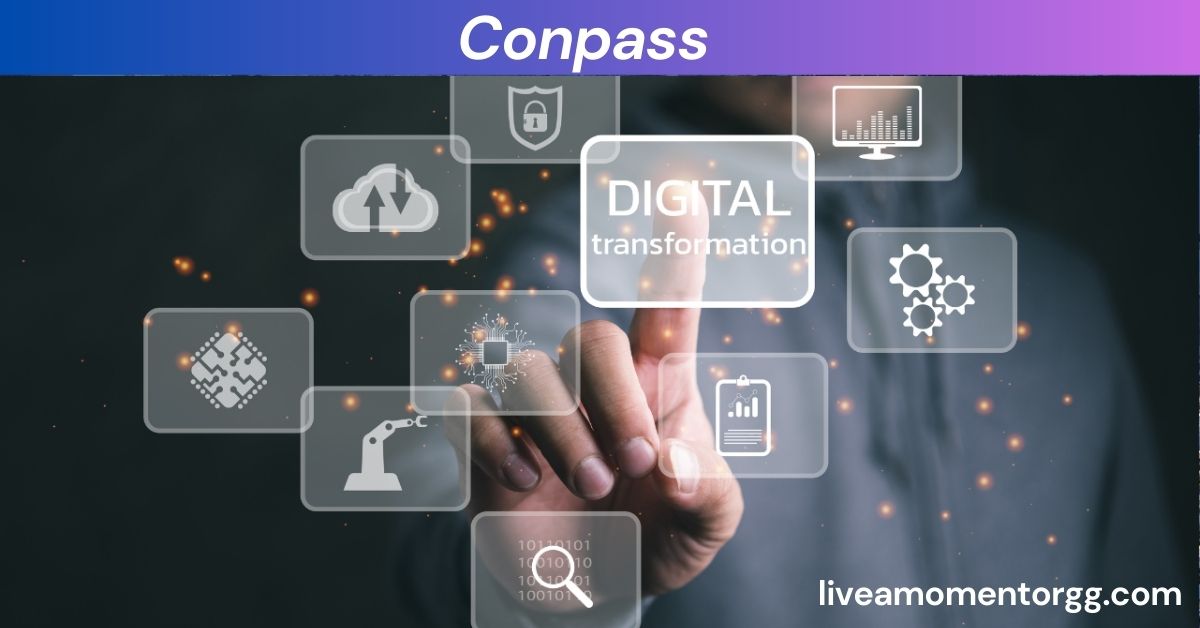Conpass: Revolutionizing Customer Experience Automation for Software Companies
In the ever-changing world of software development, understanding customer satisfaction and improving engagement is crucial for success. Software companies can no longer rely on just providing great products—they must also connect with their users and ensure their needs are consistently met. This is where Conpass comes into play, an innovative customer experience automation tool that helps software companies engage with users and measure important metrics like Net Promoter Score (NPS).
In this detailed guide, we’ll dive into what Conpass is, explore its features, benefits, and applications, and explain how it can help software companies in the USA improve their customer experience, retention, and growth. We will also provide practical tips on how to make the most of the tool and address common questions about its functionality.
What is Conpass?
Conpass is a powerful customer experience automation platform designed to help software companies engage with users and measure satisfaction through automated surveys, feedback forms, and in-app messaging. The platform’s core feature is its ability to capture and analyze Net Promoter Score (NPS), a metric widely used by businesses to measure customer loyalty and satisfaction.
Through Conpass, software companies can collect valuable feedback from their users, identify key pain points, and gain insights into what features or improvements are needed. This tool is designed to be easy to use, even for companies that may not have a dedicated customer experience team, making it an excellent choice for businesses of all sizes.

How Does Conpass Fit into the Software Industry?
In the software industry, user feedback is one of the most valuable assets a company can have. Whether you’re developing a new feature or looking to improve existing ones, understanding user experience (UX) is essential. Conpass automates the collection of this feedback, making it easier for software companies to engage their customers and make data-driven decisions.
The platform provides automated tools for gathering insights from users at key touchpoints in their journey, whether it’s immediately after a feature launch, post-purchase, or following a major update. This consistent feedback helps companies identify opportunities for improvement, track progress over time, and build a deeper connection with their user base.
Key Features of Conpass
1. NPS Measurement
The Net Promoter Score (NPS) is a vital metric used by businesses worldwide to determine customer satisfaction and loyalty. Conpass makes it simple to collect NPS data by automatically sending survey invitations to users after key interactions or events, such as product use, feature updates, or purchases.
NPS surveys typically ask one question: “On a scale from 0 to 10, how likely are you to recommend our product to a friend or colleague?” Based on their responses, customers are classified into three groups:
- Promoters (9-10): Highly satisfied users who are likely to recommend the product to others.
- Passives (7-8): Satisfied users but not enthusiastic enough to actively promote the product.
- Detractors (0-6): Unhappy users who are unlikely to recommend the product and may even share negative feedback.
Conpass not only automates the NPS collection process but also provides real-time analytics, allowing companies to instantly evaluate their customer loyalty and identify issues that need attention.
Also Read: About Etherions .com: The Future of Blockchain Technology
2. User Engagement
Keeping users engaged is critical for retention and long-term success. Conpass helps software companies maintain regular communication with their users through a variety of methods, such as in-app messages, email surveys, and feedback prompts.
User engagement is more than just gathering feedback; it’s about creating a two-way communication channel where users feel heard and appreciated. Conpass makes it easy for companies to send personalized messages that encourage users to share their thoughts, offer suggestions, or report issues.
With Conpass, businesses can automate these engagement efforts, ensuring that users receive relevant surveys and messages at the right times. This helps foster positive relationships with users while also ensuring that companies get the insights they need to improve.
3. Automated Customer Feedback
One of the most tedious tasks for software companies is manually collecting customer feedback. However, Conpass removes this burden by automating the process. The platform allows businesses to set up customized feedback campaigns that run automatically, either on a set schedule or triggered by specific events.
For example, Conpass can send out a feedback request after a user completes a certain action in the software, such as completing a purchase or finishing a tutorial. By automating this process, software companies can ensure that they are continuously collecting feedback from users without the need for manual intervention.
The feedback collected by Conpass can be in the form of surveys, ratings, comments, or even open-ended questions. The tool then aggregates this data, making it easy for companies to track trends, identify common issues, and take action.
4. Real-Time Analytics
In today’s fast-paced business environment, waiting days or weeks for feedback results can be detrimental. Conpass offers real-time analytics, allowing companies to view user feedback and NPS data as soon as it’s collected.
The platform’s dashboard provides a clear, easy-to-understand overview of customer satisfaction metrics, highlighting trends and patterns that can be acted upon immediately. Whether you’re monitoring overall satisfaction, analyzing specific feature feedback, or tracking NPS scores, Conpass enables companies to make data-driven decisions faster.
Real-time insights also allow businesses to track the success of their customer engagement strategies. If certain efforts are yielding positive results, companies can continue those initiatives, while less effective ones can be adjusted or abandoned.
5. Customizable Surveys
Every software company is different, and so are their customers. That’s why Conpass allows businesses to create surveys tailored to their specific needs. Whether you’re looking for feedback on a particular feature, a recent update, or your overall product, Conpass gives you the flexibility to customize your surveys.
The platform offers a variety of survey templates that can be easily modified to suit the specific goals of a business. Users can add their own questions, adjust the survey length, and even design the appearance of the surveys to align with the company’s branding.
Also Read: Kevin O Leary Wine: A Journey Into the World of Affordable Elegance
6. Segmented User Feedback
Not all users are the same. Conpass provides segmentation tools that allow businesses to categorize users based on various attributes, such as demographics, behavior, or customer journey stage. This segmentation helps software companies target specific groups with relevant surveys, ensuring they get the most accurate feedback from the right users.
For example, a company could target new users with an onboarding feedback survey or ask long-term users for suggestions about future product updates. By segmenting the user base, Conpass helps businesses gain insights that are more actionable and tailored to their specific audience.
How Does Conpass Work?
Using Conpass is straightforward and designed for ease of use. The platform offers a clean, user-friendly interface that allows businesses to set up, manage, and track feedback campaigns without the need for extensive training or technical expertise.
1. Create Surveys
Once you sign up for Conpass, the first step is to create your surveys. The platform offers a variety of templates, such as NPS surveys, feature feedback surveys, and satisfaction surveys. You can choose a template that fits your needs or build a custom survey from scratch.
The survey creation process is simple—just select your questions, determine the response format (e.g., multiple choice, open-ended), and set the conditions for when and how the survey will be triggered. The tool also lets you add a personal touch by customizing the design and branding to match your company’s style.
2. Distribute Surveys
Once your survey is ready, Conpass makes it easy to distribute it to your users. You can send surveys via email, in-app notifications, or even through a shareable link. The platform allows you to set up automated triggers, so surveys are sent at the right moment, whether it’s after a key action or as part of a scheduled campaign.
For example, you can set up a trigger to send a survey to users after they use a new feature, purchase a product, or reach a milestone in the software. This ensures that you’re collecting feedback at the most relevant times.
3. Track Responses
As surveys go out and responses begin to come in, Conpass tracks everything in real time. You can monitor user feedback, NPS scores, and engagement levels on your dashboard, which provides a clear overview of your feedback campaign’s progress.
The dashboard is designed to be intuitive, with easy-to-read charts and graphs that highlight key data points. Whether you’re tracking overall satisfaction or specific user groups, Conpass provides a detailed snapshot of your customer experience.
4. Analyze Feedback
Once enough responses have been collected, Conpass provides tools for analyzing the data. You can sort feedback by various parameters, such as NPS scores, product features, or user demographics, to gain insights that matter most to your business.
Also Read: Casade : Everything You Need to Know
The platform also helps you identify trends over time, which can be particularly useful for tracking the success of new features or gauging the impact of customer engagement efforts. For example, if you’ve recently made changes to your software, Conpass can show whether these updates have had a positive impact on user satisfaction.
5. Engage Users
The final step in the process is engaging users based on their feedback. With Conpass, you can follow up with users who provided valuable insights, either by thanking them or informing them about upcoming changes. Engaging users after they provide feedback helps build trust and shows that you’re actively working to improve your product based on their input.
Best Practices for Using Conpass
1. Be Transparent with Users
Transparency is key to building trust with your users. When asking for feedback, clearly explain why their input is important and how it will help improve the product. Users are more likely to participate if they feel their opinions truly matter.
2. Use the Data to Drive Action
Feedback is only valuable if it leads to action. Use Conpass’s insights to identify areas for improvement and prioritize changes based on user needs. Acting on feedback demonstrates to customers that their input is valued and fosters loyalty.
3. Keep Surveys Short and Focused
Users are more likely to complete shorter surveys. Keep your questions focused and avoid overwhelming respondents with too many inquiries. This increases response rates and ensures that users provide quality insights.
4. Follow Up with Respondents
Don’t let feedback go unanswered. Once you’ve collected insights, follow up with users to let them know how their input is being used. This creates a sense of community and shows that you’re committed to improving their experience.
5. Monitor NPS Trends
NPS is a powerful metric for tracking customer satisfaction. Regularly monitor your NPS score to spot potential issues early. A sudden dip in your score may indicate a problem that needs to be addressed immediately.
Conpass and the Future of Customer Experience Automation
The future of customer experience automation is bright, and Conpass is leading the way. As customer expectations continue to evolve, software companies must adapt by not only offering high-quality products but also ensuring seamless, personalized experiences.
With its focus on NPS and user engagement, Conpass helps businesses automate customer feedback collection, providing valuable insights that can shape the future of their products and services. Whether you’re tracking satisfaction, gathering feature requests, or measuring loyalty, Conpass provides the tools you need to enhance your customer experience.
Also Read: Mexus: Revolutionizing the Way We Organize, Categorize, and Access Learning Resources
FAQs About Conpass
What is NPS, and why is it important?
NPS (Net Promoter Score) is a metric that measures customer loyalty by asking users how likely they are to recommend a product to others. It’s important because it provides an overall view of customer satisfaction and helps identify areas for improvement.
How does Conpass help improve customer satisfaction?
Conpass helps improve customer satisfaction by automating feedback collection, providing real-time insights, and enabling businesses to take action based on user feedback. This continuous loop of feedback and improvement ensures that customer concerns are addressed and positive experiences are reinforced.
Can Conpass be used for all types of software companies?
Yes, Conpass is designed for software companies of all sizes, from small startups to large enterprises. Whether you’re a SaaS provider, app developer, or enterprise software company, Conpass can help you improve user engagement and gather actionable insights.
Is Conpass easy to use for non-technical users?
Absolutely! Conpass has a user-friendly interface that’s easy to navigate, even for those without a technical background. The platform’s setup process is simple, and no coding skills are required to create and distribute surveys.
Conclusion
In today’s competitive software landscape, ensuring a great customer experience is more important than ever. Conpass is a valuable tool for software companies looking to engage with their users, measure satisfaction, and continuously improve their products. By automating feedback collection, tracking NPS, and providing real-time insights, Conpass empowers businesses to make informed decisions and create stronger relationships with their customers.
By following best practices and utilizing Conpass‘s full suite of features, software companies can stay ahead of the curve and build products that truly resonate with their users.






